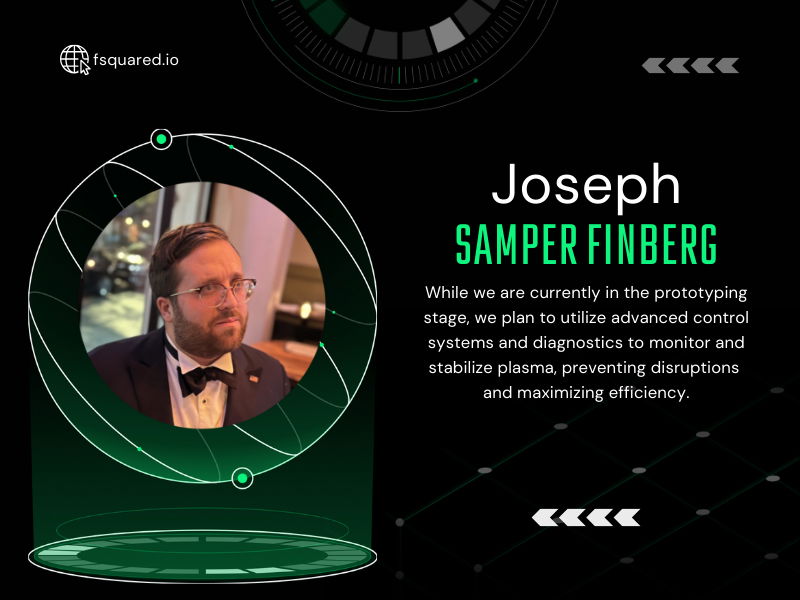Joseph Samper Finberg
Research Spotlight: Joseph Finberg’s Innovations In Various Sectors- Explored!
Joseph Samper Finberg, the visionary founder of F Squared Fusion, is best known for his groundbreaking work in plasma physics and fusion energy.
However, his research interests extend across multiple sectors, exploring cutting-edge technologies and innovative approaches to solving some of the world’s most pressing challenges.
In this blog, we’ll examine Joseph Finberg’s contributions in various sectors, highlighting his impact on fusion energy, plasma turbulence, and advanced particle interactions.

Advancing Fusion Energy
At the heart of Joseph Finberg’s research is his work on making fusion energy commercially viable. Fusion, which replicates the sun's energy-producing process, offers the potential for a clean, limitless energy source that could transform global energy markets.
Finberg addresses the technical barriers that have historically prevented fusion energy from becoming a reality through his company, F Squared Fusion.
One of Finberg’s key innovations is his exploration of pulsed fusion technology, particularly with deuterium-helium three fusion. This process reduces the production of harmful neutrons, which can cause radiation damage and shorten the lifespan of fusion reactors. Finberg’s research aims to optimize energy conversion by leveraging intense energy bursts while minimizing reactor wear, making fusion reactors more sustainable and cost-effective over time.
Plasma Turbulence and Alfven Waves
Another significant area of Joseph S Finberg’s research involves plasma turbulence in fusion reactors.
Plasma, the hot, charged gas that fuels fusion reactions, is highly unstable, making it difficult to maintain the necessary conditions for sustained energy production.
Finberg’s work on electromagnetic (EM) gyrokinetic (GK) turbulence in tokamaks focuses on understanding how energetic alpha particles from deuterium-tritium fusion interact with plasma turbulence.
This interaction can destabilize Alfven waves, which are crucial to maintaining plasma confinement and the reactor's overall power balance.
Finberg’s studies aim to understand these destabilizations better and find ways to mitigate them, ensuring more stable and efficient fusion energy production.
His research is critical to improving plasma confinement, which is key to achieving a self-heating, burning plasma—the ultimate goal for practical fusion energy generation.
Reducing Radiation Damage
Another innovative area of Joseph Finberg’s research is reducing the radiation damage in fusion reactors. Traditional fusion processes generate significant amounts of neutrons, which can damage reactor components over time.
Finberg has been exploring alternative fusion methods to address this challenge, such as deuterium-helium three fusion. This method reduces neutron production, making the reactor environment safer and more sustainable.
By minimizing radiation damage, Finberg’s research contributes to extending the lifespan of fusion reactors and reducing maintenance costs, which are crucial for the commercialization of fusion energy.
Conclusion
Joe Finberg research is shaping the future of fusion energy and plasma physics. From his innovative work on pulsed fusion technology and reducing neutron production to his in-depth studies on plasma turbulence and Alfven waves, Finberg’s contributions are paving the way for sustainable energy solutions.
His research advances fusion energy and explores critical methods for improving reactor efficiency and longevity, bringing us closer to a future powered by clean and limitless energy.
